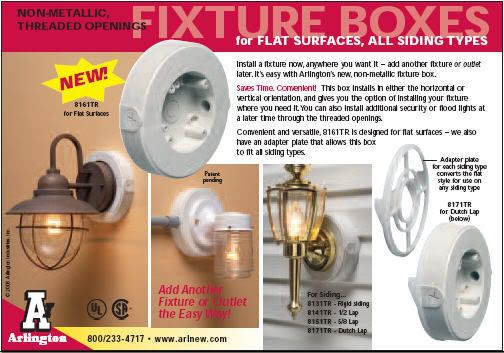Sparks, as has been suggested above, you might still be able to come into the back of the fixture, and without wiring inside the structure. What is at the top of this wall? Is it residential or commercial? Is it a parapet wall, or is there an attic?
Every brick wall I've seen is either real brick (2 or more courses with studs or furring inside), brick-and-block (with cinderblocks behind, and as above), or brick veneer (with full studs and sheathing inside).
The point is that just about every wall has at least one decent space between the outisde and inside surfaces, and can be fished 99% of the time, if you're experienced, intuitive, and have the right tools for the job.
If there is any attic or crawl space with access, you can likely drill a hole through the brick, angling up if going up, and down if going down. Stop and carefully inspect any time you hit a void, and try each space you reach.
You can usually push a fishtape up or down, or drop a chain down. Having a spotter with flashlight is a must, and 2-way radios are a bonus. Paint or tape the end of the fishtape or chain white for easier spotting.
Three weeks ago, a customer moved, and asked us to relocate several fixtures from the old house to the new one, and of course, the livingroom had no ceiling outlet. Even better, the walls and ceiling were real plaster.
There were bedrooms above, and finished ceilings in the basement. There was a wall switch that controlled a receptacle in the baseboard on an exterior wall. After considering all options inside (none), I went outside.
The exterior was all brick, but the upstais walls were actually slate tile shingled roofing. It was what's known as a gambrel roof, something like this one (click for bigger):

I realized that I could access the ends of the joists, as well as the top of the brick, if I could get inside the eave. I told her that we could cut out a section of the soffit and run the wire horizontally from joist space to stud space.
She didn't like my price, and got her carpenter to cut out and replace about six feet of the soffit. That was fine with me! I cut the hole with a 4" carbide holesaw, and removed the receptacle box from the baseboard.
We pushed a fishtape up from the receptacle box, and out from the ceiling hole, where we installed a fan brace and box. We did the whole thing in less than an hour, never made a scratch on the inside, and she was ecstatic.
Of course, we haven't seen your building yet, but there's just about no place that can't be fished if you try.



